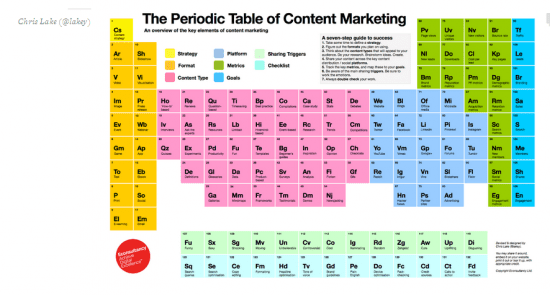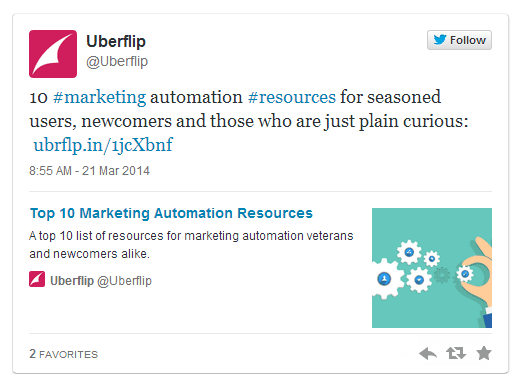How should content marketers drive leads for B2B?
Getting a good 'lead' remains the metric that matters the most to marketers. To a Journalist, a good 'lede' is a great headline that entices readers to read the full story. As the content marketing revolution marches on, all companies will need to become, in part, media companies. Modern marketers can join the charge forward and improve program ROI, by adopting a new CPL: the Cost per Lede.
Discussion of two biases in marketing
However, as I work with marketers around the world, I’m struck by two persistent traditional marketing biases that keep them from joining the revolution:
- 1. The bias in favour of director-and-above level professionals, at the expense of individual contributors; and
- 2. The bias in favour of opportunities and leads, at the expense of prospects and suspects.
As the VP of the Global Audience Business at BrightTALK my objective is to deliver the one thing that all B2B storytellers seek — an audience of relevant professionals. I love spending time with clients, helping them organize resources, design workflows, and craft effective strategies to regularly publish content that informs and entertains. After all, that’s how to build a high-conversion sales funnel in the modern marketing era where buyers self-educate themselves towards each purchase.
It’s rewarding to share the insights I was fortunate to develop during my time as publisher of Reuters News with companies of all sizes and stages, and across various industries and sectors, as each of them try to figure out how to build a scalable and cost-effective content creation and publication machine. In effect, helping them become, at least in part, a media company.
 It seems fitting that after years of helping news professionals adapt to a shift in the media landscape requiring them to partially regard a sales and marketing mentality, I now spend much of my time helping sales and marketing professionals adapt to a shift in their landscape requiring them to partially regard a publishing mentality.
It seems fitting that after years of helping news professionals adapt to a shift in the media landscape requiring them to partially regard a sales and marketing mentality, I now spend much of my time helping sales and marketing professionals adapt to a shift in their landscape requiring them to partially regard a publishing mentality.
The cause of both of these tectonic shifts is identical: the drastically reduced cost of creating, disseminating, and consuming information. The effect of being slow to react will also be the same: irrelevance.
Argument 1 - 'Directors and above, please' - At the Expense of Individual Contribution?
Historically, influence and decision making inside of the enterprise was concentrated heavily among senior management. This was based primarily on two factors:
- 1. Access to and publication of information, itself, was concentrated among more senior managers; and
- 2. The cost and implementation of on-premises software favoured centralized purchasing and mandated IT involvement.
The Age of Information
That logic is now outdated; yet the bias persists. The cost of creating, disseminating and consuming information has reduced to near zero. Social media platforms, MOOCs, and the proliferation of professional blogs make it nearly effortless to stay abreast of current trends and connect with and learn from a wide variety of experienced professionals.
As often as not nowadays, hyper-relevant content seeks out the professional and offers a non-linear knowledge feed. The Internet has graduated from 'Our Web' and 'your Web' to 'my Web.' Narrowcast has replaced broadcast.
Employee Generated Content
Companies are also rapidly adopting collaboration platforms and encouraging employees of every level to create employee generated content (EGC), share content they are consuming, and exchange views.
Influence has permeated the enterprise. Decision makers delegate due diligence to junior colleagues, and newly minted professionals are pro-actively self-educating and impacting business and buying decisions. This is especially true as the newest generation of employees arrive armed with a superior technology comfort level and natural sharing behaviors.
A New Class of B2B Buyers
At the same time as more employees are exerting actual influence by self-educating and sharing, the proliferation of low-impact, low-cost, cloud-based solutions have disintermediated centralized purchasing and IT departments and a new class of B2B decision makers/buyers has been formed.
On-Premises versus The Cloud
Up until around 2005, software was primarily installed and run on computers housed inside of the company that bought the software (i.e., on-premises software). This meant that the cost of implementation was higher, the impact of a bad decision was larger, and IT involvement was required. Cloud-based solutions offer pay-as-you-go models, and lower overall costs.
Access for an individual, a team, or a single office or department is as easy as typing a username and password. Consequently, more people throughout the enterprise are empowered to be decision makers.
Modern marketers can future-proof the performance of their marketing programs by shedding traditional thinking and implementing a content marketing strategy designed to reach professionals at every stage of their career.
'SUSPECTS DON’T BUY'
In addition to the outdated bias heavily in favour of senior professionals, the bias in favour of opportunities and leads, at the expense of prospects and suspects, is also limiting the efficacy of modern marketing programs.
Argument 2 - Suspects/Prospects/Leads/Opportunities - at the expense of Prospects and Suspects
For new marketing and sales professionals, the journey from stranger to customer starts with your target audience ('suspects'), moves along to someone who has explicitly or implicitly signaled a related need that you can help with ('prospect'), continues on to a relevant person who you know to have the ability to make a purchase ('lead') and, finally, rests with the person who is also ready to buy ('opportunity').
Modern marketing does not alter that landscape. Marketing and sales professionals will always prefer the person who has a professed need and the willingness and means to act on that need.
The difference is that, in the age of information, finding your suspects and prospects and genuinely and regularly helping them is straightforward, scalable and cost effective. The amount of resources required to nurture suspects and prospects has been reduced and the manual process has been automated. That alters the logic underlying the bias. We all still prefer an audience abundant with opportunities, but too many marketers still disregard suspects (the oxygen that feeds a healthy sales pipeline).
Restricting your marketing programs to attracting only 'bottom of the funnel leads' makes sense if your content is unable to distinguish suspects from opportunities, resources to create content are limited and expensive, or spray-and-pray is the only publishing option. But those days are long gone.
Content Hacking
A supportive ecosystem has encircled modern marketers from ideation through publication , allowing anyone to content hack their way into becoming a media company.
- For example, InBoundWriter can help you discover content marketing topics that are in-demand and will perform,
- Scripted and Contently can connect you to professional writers who can take those ideas and craft content,
- Sketch Deck can take that content and transform it into a compelling presentation,
- visual.ly can help add engaging visuals, such as infographics, and BrightTALK offers what every storyteller wants, an engaged audience.

Hyper-Relevance of your content
In addition to widely-available and affordable resources to help any company, department or team create and curate more content on a regular basis, marketing automation systems can optimize that content by publishing the most relevant piece to audience cohorts defined by their stage in the buyer’s journey.
An audience that includes suspects and prospects no longer sacrifices program ROI. Resource-intensive and generic campaigns have been replaced by content marketing touch points that have been crafted and executed in a cost-effective and scalable way.
Scoring mechanisms are a common feature of automated nurturing campaigns delivering a hyper-relevant user experience.

Random Acts of Content
No amount of affordable resources or technology can save the marketer bent on committing random acts of content.
Remember when you were a young child, anxiously awaiting a bedtime story? How satisfied would you have been with, 'Once upon a time, the end'? Not very.
Content marketing is no different. No matter how much time it takes to craft a masterpiece, good content marketing is not any single piece of content.
Modern marketers plan ahead with not only an outline and an objective for one piece, but they also consider the larger story their brand is telling and they tell that story with a regular cadence that connects to their product roadmap, sponsored events, and other business milestones. Modern marketers build trust with their audience with useful content and, in due time, that audience converts.
That’s because helping people is more effective than interrupting them with advertising.
Most of your audience will not have an immediate, unmet need for the services you provide. Publishing at people and then expecting them to be instantly receptive to a telemarketer or sales call is unrealistic.
It’s time to stop content marketing, and start helping. It’s time to stop thinking of your content as a sales opportunity and start thinking of it as an opportunity to help people.
Explore and experiment with the resources widely available to the modern marketer in the age of information. Shed the biases in favuor of 'Director-and-above level professionals' (at the expense of individual contributors) and 'opportunities and leads' (at the expense of prospects and suspects). Cost per Lede is the metric that matters the most to the modern marketer, and the ROI is extraordinary.
Thanks to Andrew Goldner for sharing his thoughts and opinions in this blog post. Andrew (@agoldner) is a seasoned business leader with global experience and a 'recovering' senior technology and media attorney. He co-founded an early new media start-up in the music industry in NYC and Orlando, was an early associate in the technology, media and eCommerce practice group at Skadden Arps, served as Associate General Counsel at DoubleClick (leading up to the Google acquisition), co-founded Thomson Financial News (culminating with the acquisition of Reuters), and served in a number of senior roles at Thomson Reuters in America, Hong Kong and Singapore, including as Publisher of Reuters News. He is an active and passionate advisor (Quibb, Countable, InkFold) and mentor (Tradecraft, Matter, Golden Gate Ventures, Founders Institute) in Silicon Valley.









